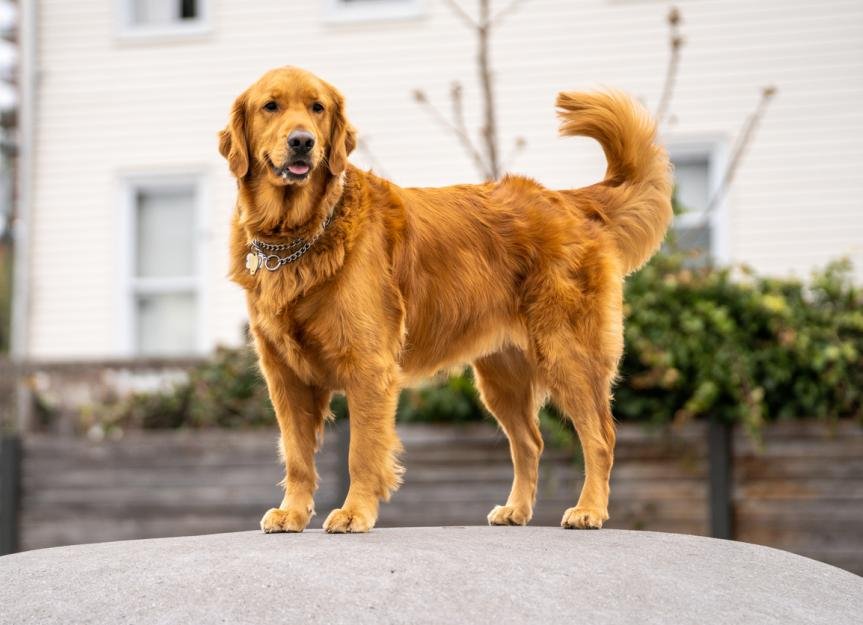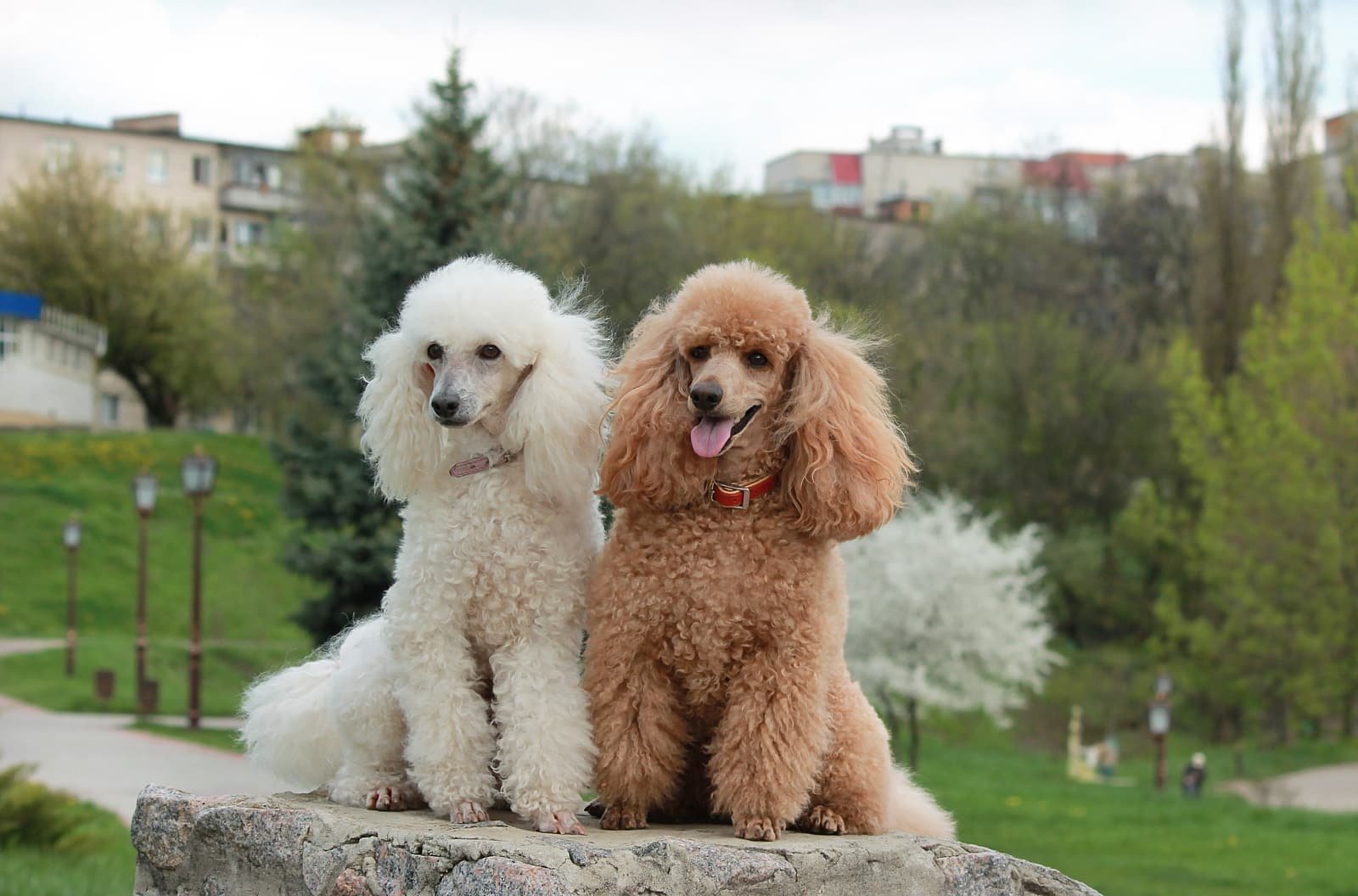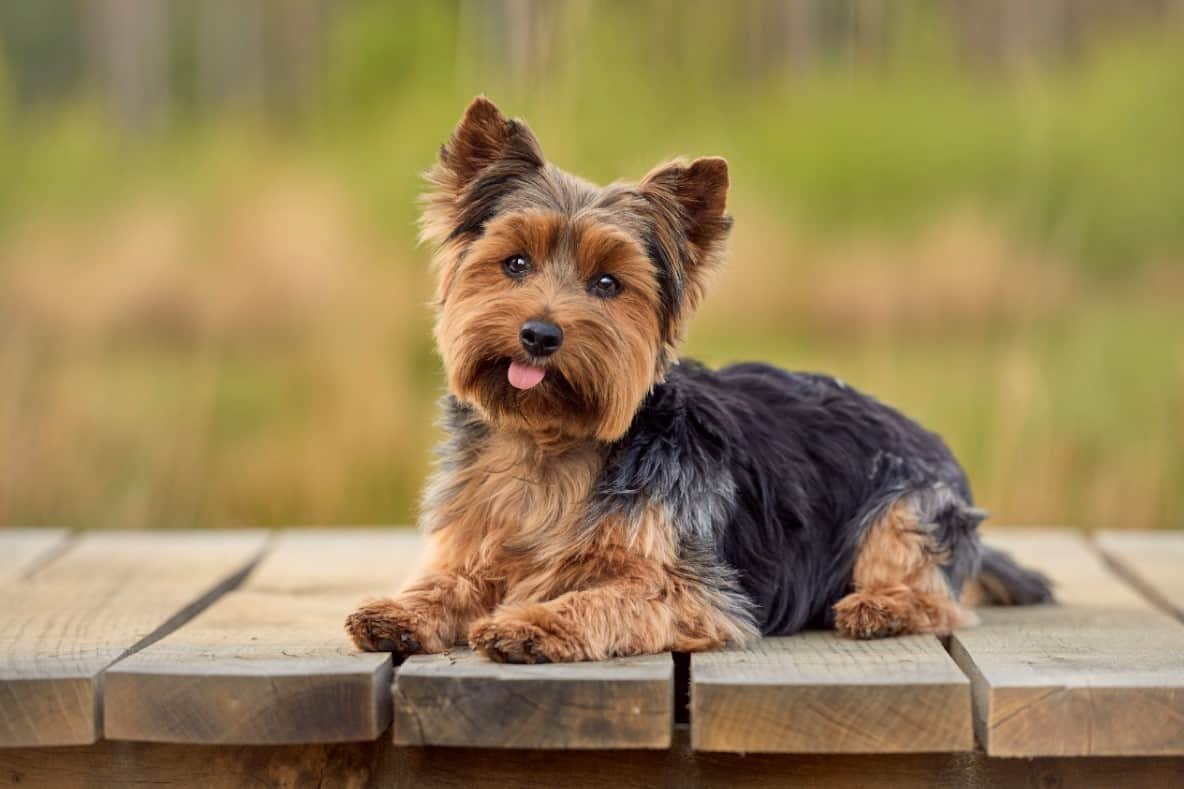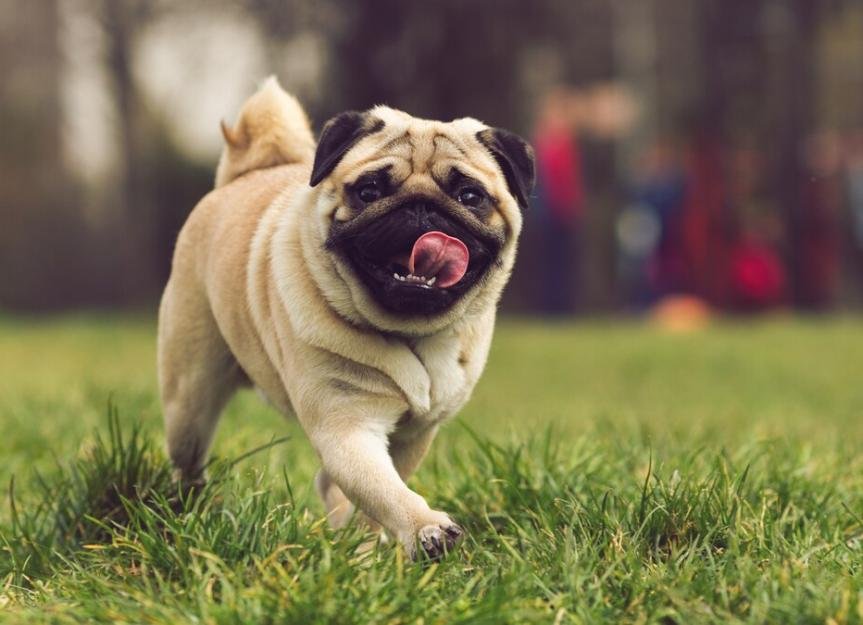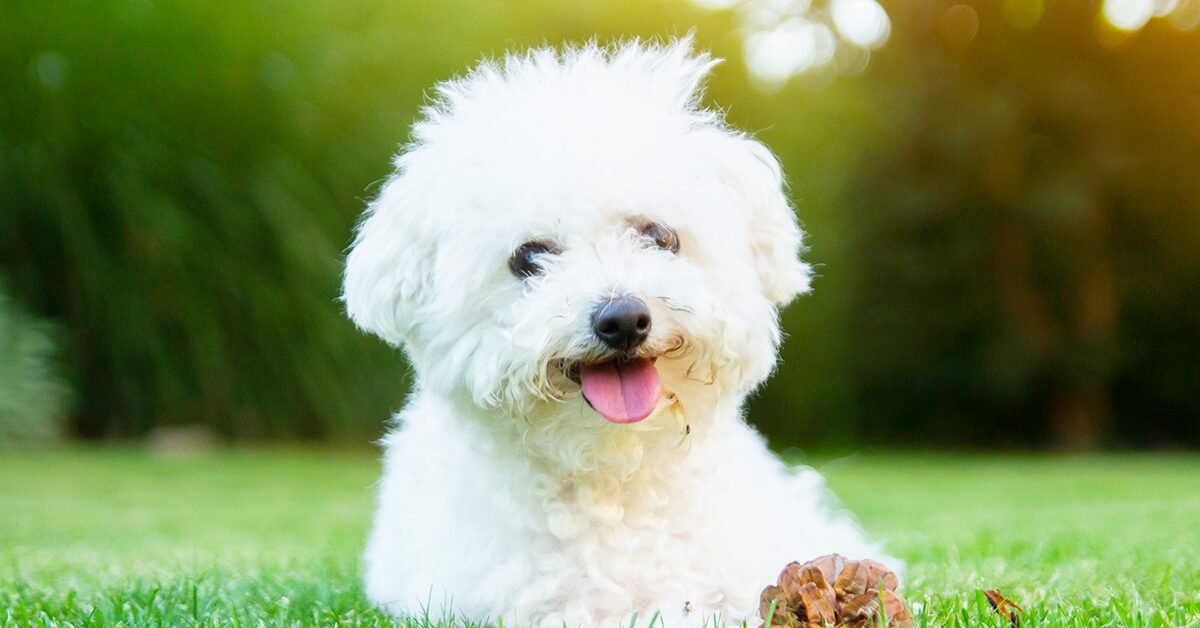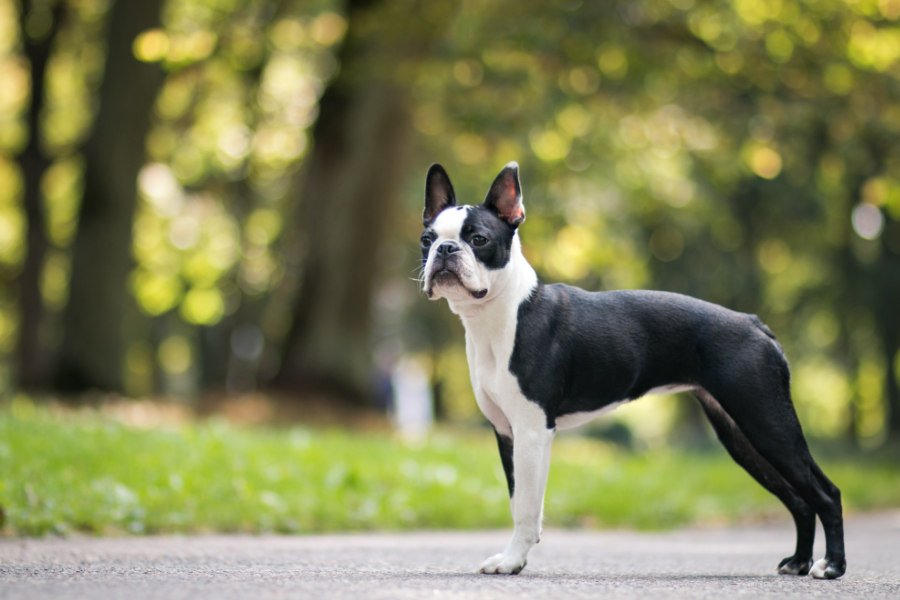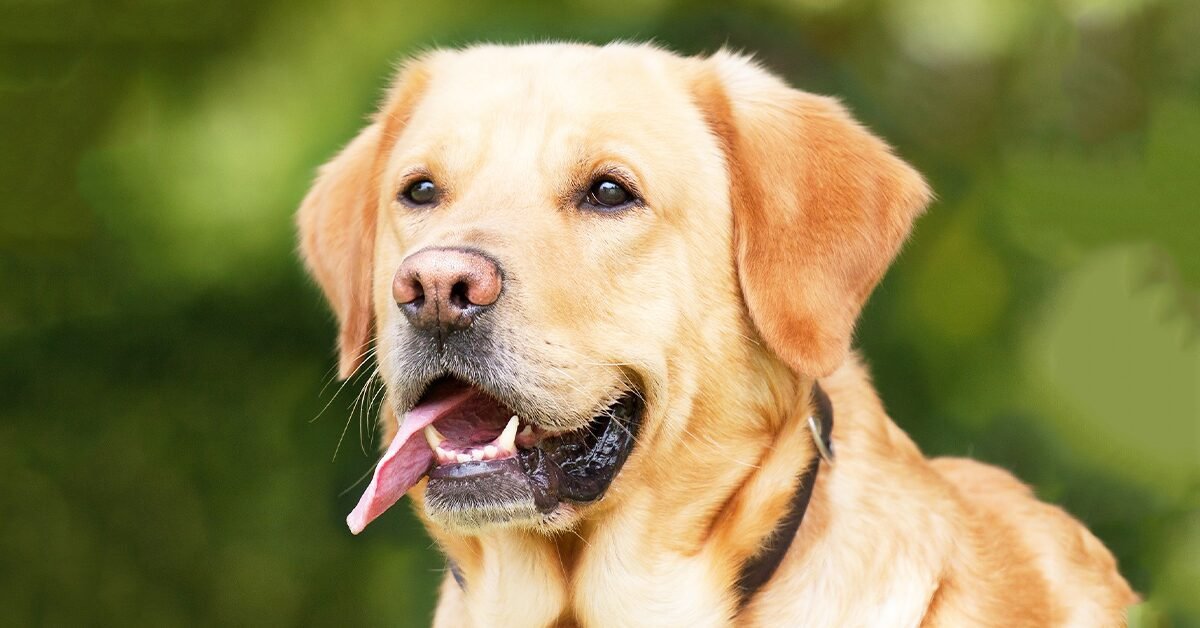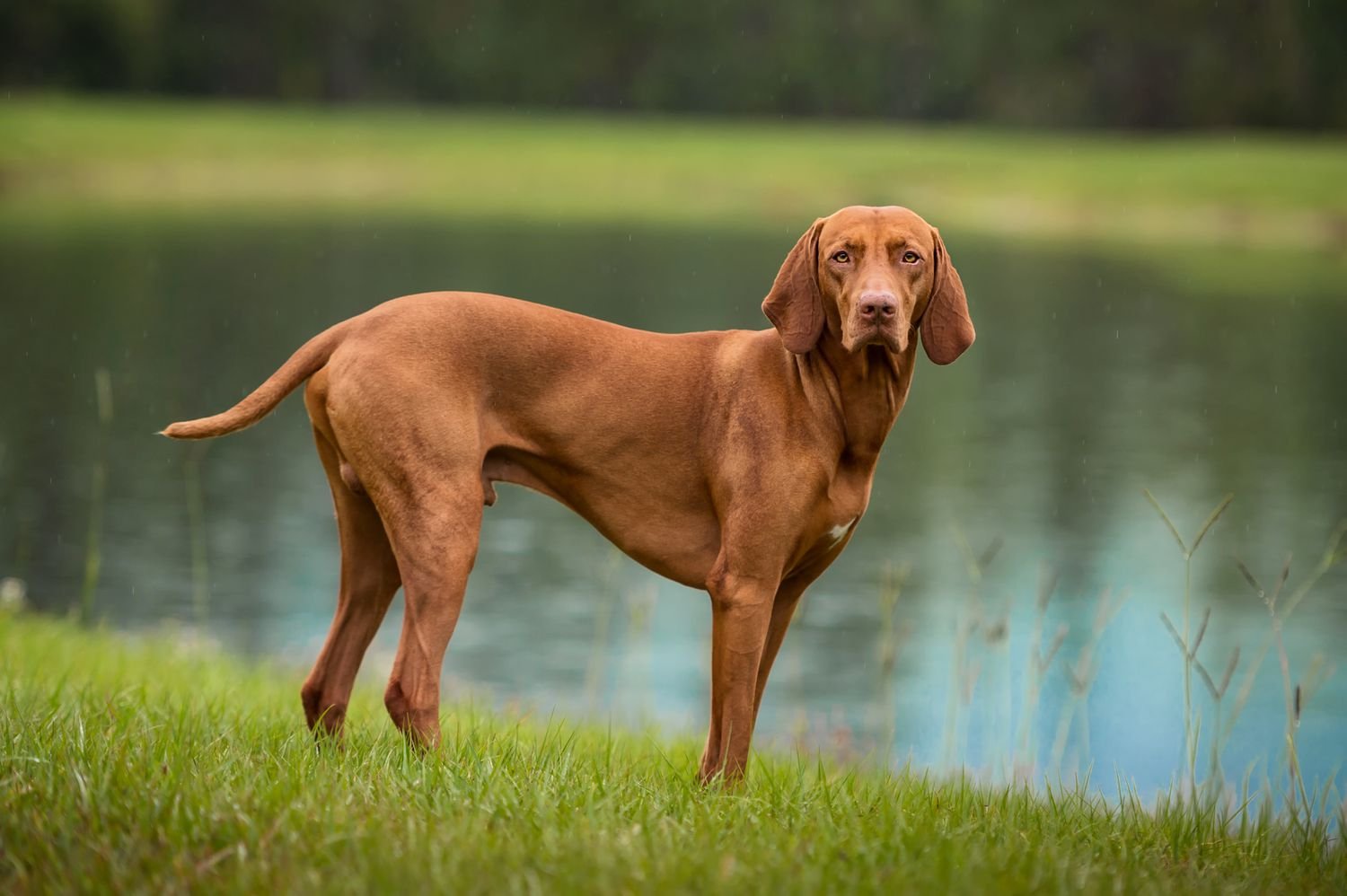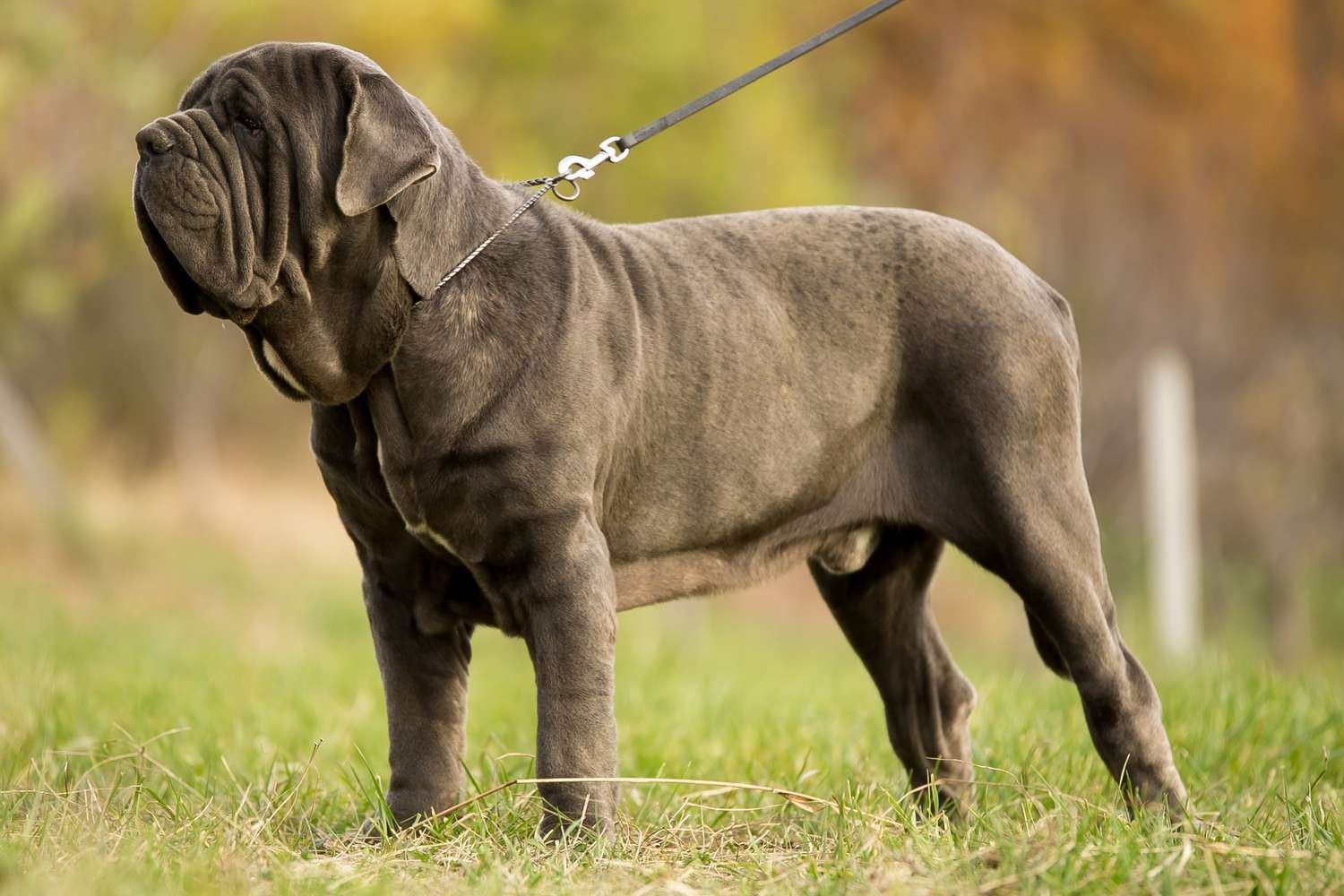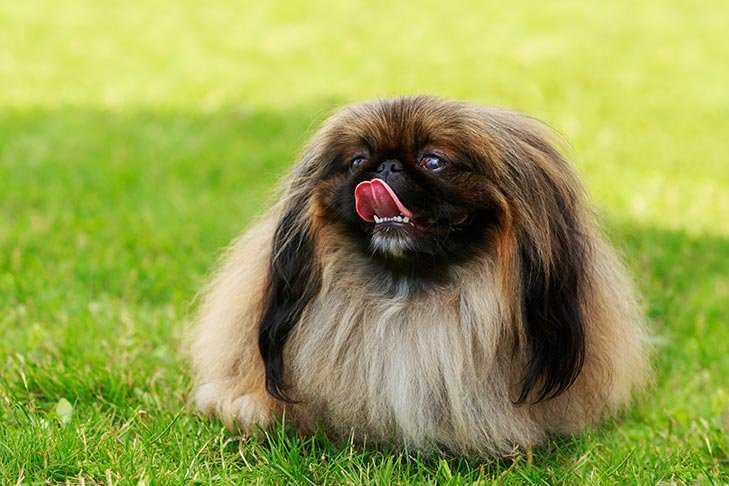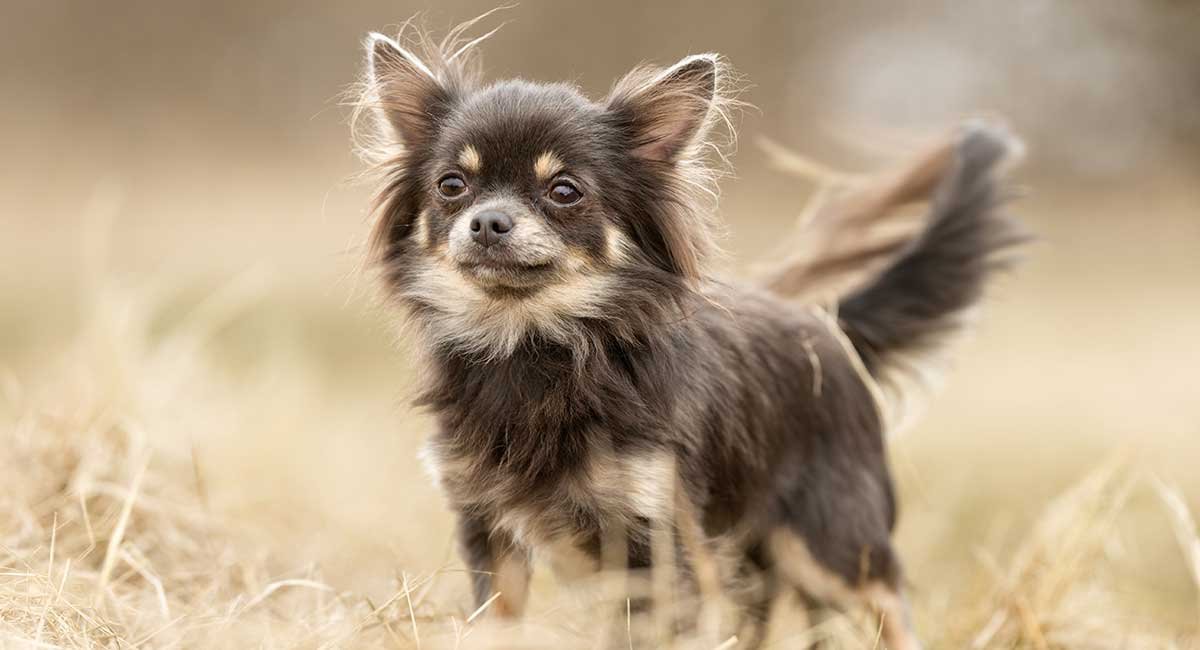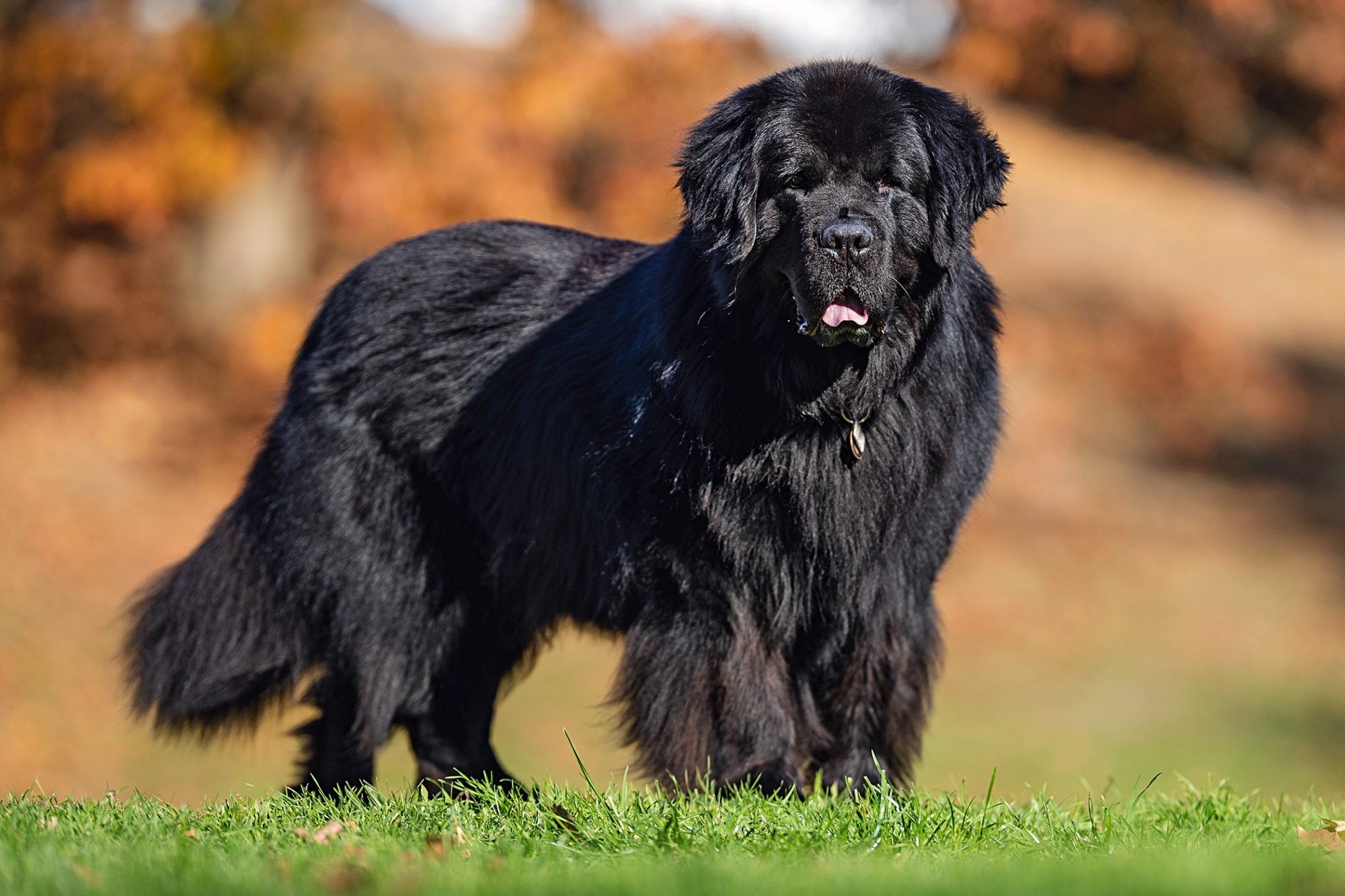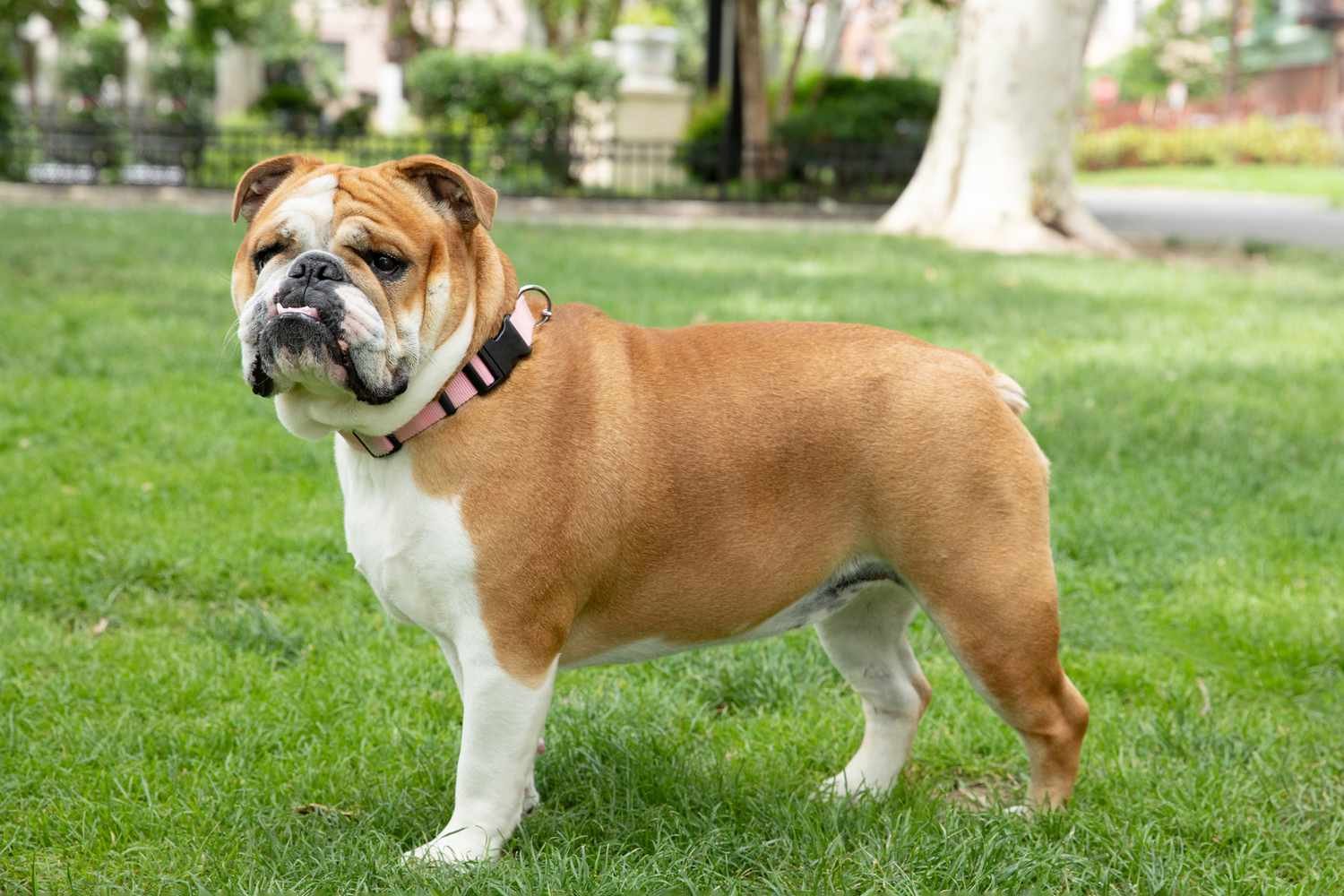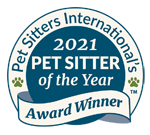Humans have been domesticating and breeding dogs for thousands of years. From hunting to sled-pulling to herding and protection, dogs have helped us survive and thrive in countless ways. One of the most important roles dogs play in our lives is companionship. Even dogs who can’t track scents or round up sheep and cattle can enrich our lives—simply by being by our sides.
There’s always been a special connection between humans and dogs. This bond is clear to see in much of our artwork, ancient and modern. Dogs were affectionately depicted on the walls of the ancient Roman city of Pompeii, for example. During the Renaissance, many noblemen and noblewomen opted to have their portraits painted with a favorite lap dog. Today, one of the most iconic pieces of pop art depicts a group of dogs sitting around a table playing poker. Clearly, humans and dogs have been friends for a long time.
Did you know that well over 300 different dog breeds are officially recognized today? Over the years, we’ve bred dogs for different purposes, climates, desires and needs. Today, no matter what your lifestyle is like, there’s a dog breed designed to suit it.
Many dog breeds originate in France, Germany, and Britain. In fact, these three nations have produced more dog breeds than all other countries put together. However, almost every region of the globe has produced at least one specific type of dog. From the Middle East to Africa, Asia to South America, and everything in between, tracing the origin of your favorite breed can take you on an exciting and unexpected global journey.
With so many different breeds available, how do you decide which dog is right for you? One factor to consider is the breed’s temperament. While individual dogs can vary in behavior and personality, many breeds are known for common behavior characteristics. In a family with plenty of land available and energetic children, an active dog might feel right at home. For someone who enjoys quiet evenings on the couch or formal entertaining, a more relaxed breed might be a better choice.
It's also important to consider common health characteristics in a particular dog breed. While there will always be variation among individual dogs, some breeds are more prone to specific health concerns. Before bringing home a new dog, investigating its potential health problems can save you a lot of trouble down the road. If you decide on a breed that’s known for breathing difficulty, bone or joint issues, or poor eyesight, it’s wise to set aside funds for future vet bills and be aware of signs of trouble to watch for.
Finally, a breed’s distinctive look can play a large role in your decision. Some of us favor petite, delicate breeds, while others prefer a muscular, powerful physique. For some dog owners, a full, luxurious coat is a must. Others look for sleek, short hair or perhaps no hair at all. Dogs’ facial expressions can range from cheerful to serious and everything in between. When it comes to choosing a spouse or partner, it’s often said that there’s a ‘lid for every pot.” Whether or not this is true of human relationships, it can certainly be said of dogs. For every distinctive dog breed, there’s someone out there who finds its appearance irresistible.
Of course, some breeds commonly stand out as clear favorites. Read on to discover which dogs have made our top 10 lists. Who knows—you might discover your new favorite breed!
Top 10 Most Popular Dogs in The World
#1: Labrador Retriever
The Labrador Retriever easily tops the list of the world’s favorite canines. With coat colors including yellow, black and chocolate, Labs come in a variety of looks. Their high intelligence and even temperament makes them perfect as helpers for those with sight impairment or other physical disabilities. They’re often used to provide comfort and reassurance for anxious humans. Students during finals weeks, patients in the hospital, and traumatized children in courtrooms often benefit from the calming presence of a Labrador Retriever. They also make ideal family pets, since they’re protective while also being kind and patient with children.
#2: Golden Retrievers
Golden Retrievers, like Labs, are commonly used as working dogs. Intelligent and helpful, they’ve been trained to sniff out narcotics, rescue crisis victims and provide emotional support in stressful situations. Golden Retrievers can work hard, but they also play hard. They love to swim, fetch balls and Frisbees, romp with children and take long walks or jogs. Their beautiful golden coats, ranging from the palest yellow to a dark reddish tint, have also made them a global favorite.
#3: German Shepherds
German Shepherds originated in Germany, as you might expect, as a working breed. Before the Industrial Revolution swept Europe and America, German Shepherds were often found on rural farms, herding sheep and cattle. When the German people began leaving their villages and farms for larger, industrial cities, they brought their beloved farm dogs with them. German Shepherds proved to be ideal dogs for home protection—they’re loyal, territorial, and powerful. Today they make ideal police and military dogs. Although they can also be family pets, they’re happiest when they have an active job to do.
#4: Poodles
Poodles come in four varieties, or sizes: Standard, Medium, Miniature, and Toy. Their thick, curly coats make them ideal water dogs, and historically, they were often used to retrieve game while hunting. For people who are allergic to dog hair, poodles’ coats are often less irritating than other breeds. However, poodles do need to be groomed every month or two. They can be clipped in many different styles, from simple to complex. Some traditional styles feature puffs of hair, like pom-poms, on the dog’s head and ankles, and these can make for a dramatic look. After all, poodles have often worked as circus performers throughout history, since they’re athletic and agile. Despite the fancy haircuts they sometimes sport, poodles are among the most intelligent and hardworking dogs on the planet.
#5: Chihuahuas
Chihuahuas tend to be a polarizing breed. Some people love them, while others can’t stand them. However, there are around 3 million pet Chihuahuas in America alone, so their unique appeal for many owners is clear to see. Chihuahuas come in long-haired and short-haired varieties and typically weigh 6 pounds or less. Although they can be aggressive towards people and other dogs, Chihuahuas are typically affectionate towards their owners and boast a big personality in a small frame.
#6: Beagles
Known for their distinctive howl-like bark, beagles are among the oldest dog breeds. They were originally used for hunting in packs, and their present-day personalities reflect their past. Beagles are sociable with other dogs and with people, and they make loving companions. Beagles are categorized as hounds, or hunting dogs, but they are among the smaller hound breeds. Like all hounds, they have exceptionally keen eyes and noses.
#7: Yorkshire Terriers
The Yorkshire Terrier was originally bred around 200 years ago in Yorkshire, England. Many “Yorkies” are black and tan, but they also come in other varieties such as yellow or gray. These dogs are tiny—usually under 7 pounds—but full of life and energy. Yorkies don’t shed as much as many other breeds, so they’re ideal for those with allergies to pet hair. They tend to get very attached to their owners. This means they’re excellent company when you’re at home, but they do get very anxious when owners are away. For this reason, Yorkshire Terriers often do best when kept in pairs, so they can keep each other company when needed.
#8: Dachshunds
Dachshunds are known for their unmistakable body shape: a long body, short legs, and a long, pointed face. Dachshunds are hound-like in many ways and were bred to track scents while hunting, but they also love to dig in the soil, and their feet are especially designed for this purpose. They also have loose skin that allows them to tunnel into tight spaces underground. Their digging abilities mean that dachshunds have a lot in common not only with hounds, but with terriers as well. Dachshunds are known for stubbornness, loud barking and mistrust of strangers. Although these traits can be challenging at times, they also mean that dachshunds are excellent small guard dogs.
#9: Boxers
Many owners are especially drawn to boxers’ unique facial features. A boxer’s face is often described as droopy, babylike, or sad. While these traits may not sound attractive, they come together to create an adorable effect. Boxers are highly intelligent, excellent with children, playful, and protective. Males weigh between 65 and 80 pounds, so boxers are among the larger dogs on our global top 10 list.
#10: Bulldogs
Bulldogs are a British breed known for their calmness and gentleness. With loose facial skin, hanging jowls, and short, snub noses, bulldogs manage to look tough but kindly at the same time. Despite their short, stubby legs, bulldogs are still muscular and athletic and love regular exercise. Bulldogs are sociable and agreeable, but also known for their determination and stubbornness. The bulldog’s dignified yet resolute personality has led to its use as a national symbol for Britain, particularly during World War 2.
Top 10 Most Popular Dogs Found in Cities
#1: Corgis
Corgis are small herding dogs, originally bred in Wales. They’ve gained popularity in recent decades as Queen Elizabeth II’s beloved pets. In fact, after the Queen’s passing, many British and American social media users expressed genuine concern for her corgis’ well-being. What makes corgis so great for city-dwelling? They’re not too big—around 25 to 35 pounds—and they’re friendly without being anxious or demanding. Corgis are obedient and intelligent, so they’re easily trained for life in a busy, crowded environment.
#2: Dachshunds
Dachshunds are great pets for those in the city because they’re compact yet protective. Their bark is loud, persistent and intimidating, and they’re exceptionally territorial. If you’re looking for a dog to protect a small apartment, a dachshund may be your best bet! They do need exercise, but due to their small size and short legs, you can give them a workout in a relatively limited space.
#3: Pugs
Many veterinarians will tell you that pugs are addictive. Once an owner falls in love with the breed, they often stick to owning pugs for life! Not only are they compact, but they’re generally calmer and quieter than many other small dog breeds. When you take a stroll with your pug in the big city, you can expect other pedestrians to stop and comment on its distinctive, adorable look. As a breed, pugs are often prone to unique health problems, so regular checkups and a healthy diet are important.
#4: Yorkshire Terriers
Yorkies are small enough to get sufficient exercise in a small apartment, along with a daily leash walk. They have a loud bark that will help protect your home from intruders, but you can train them to behave well around visitors. Since Yorkies typically need regular grooming visits, they’re well-suited for urban life where groomers are easily accessible.
#5: Cavalier King Charles Spaniels
If you’re working from home in an urban environment, the Cavalier King Charles Spaniel makes a perfect companion. They become very attached to their owners and will be happy to cuddle and sit in your lap for most of the day. These dogs are often happier than most breeds to stay indoors, though they’ll still need regular walks for exercise.
#6: Bichon Frise
Fluffy, cuddly and cheerful, a Bichon Frise is certain to turn heads and get smiles from strangers every time you go for a walk. These dogs are especially great city-dwellers because they’re so adaptable and easy to train. Your neighbors will appreciate the obedient yet bubbly personality of this small breed!
#7: Boston Terriers
Boston terriers are sleek and attractive while also compact. They’re known for being friendly and well-behaved. In fact, this breed is often nicknamed the “American Gentleman.” They’re named for the city of Boston, and they tend to thrive in any city due to their sociable, easygoing personalities.
#8: French Bulldogs
French bulldogs are fairly suited to a couch potato lifestyle of napping and gazing out the window. They need walks, but not long ones, and they truly enjoy relaxing around the house. They don’t bark much, and their anxiety levels are fairly low, so they tend to do well in a crowded setting with lots of stimulation. Their pointy ears and intelligent faces are sure to get compliments wherever you go!
#9: Basenjis
Basenjis are hunting dogs originally developed in Africa. They’re unique due to the sound they make. It’s often been compared to a yodel, but it’s certainly not a bark. Not only are basenjis quiet, but they’re also docile and friendly, which makes them perfectly suited to the bustle of city life. These dogs are well-suited to periods of time alone, so for those with busy urban lifestyles, they can make excellent companions.
#10: Chihuahuas
Chihuahuas are excellent for small apartments due to their tiny size. In fact, these little dogs can weigh as little as two pounds when they’re fully grown. With a chihuahua in your apartment, you’ll never feel alone—they’re full of energy and love interacting with their owners, so you’ll always have a friend by your side. They do require careful training in order to behave well around other dogs and strangers.
Top 10 Dogs Found On Farms
#1: Australian Cattle Dogs
Australian Cattle Dogs were bred to herd cattle by gently biting their feet. Thus, this breed is sometimes also referred to as a heeler. These dogs are extremely loyal to their owners and protective of their territory. They’re not only ideal for managing livestock, but also for watching over the farm at night. Like all working dogs, Australian Cattle Dogs need plenty of room to run and appropriate training to manage aggression.
#2: Corgis
Corgis love their owners, but they have a strong independent streak. This makes them ideal farm dogs: they’ll be happy to see you, but they’ll also enjoy roaming your property on their own throughout the day. They were bred to herd cattle, so despite their small size, the corgi is a tough, courageous breed. Corgis also make excellent guard animals, and their bark resembles that of a much larger dog.
#3: Border Collies
This British dog breed is happiest on a farm, where it can work hard and stay active. Collies are considered by many to be the most intelligent breed of dog in the world. This intelligence causes them to be easily bored in cramped environments. On a farm with cattle and other livestock to herd, space to run, and a variety of landscape features, collies can be trained to perform amazing athletic stunts as well as everyday tasks.
#4: Australian Kelpies
This breed is so adept at herding livestock that many dogs learn to corral sheep and cows independently, with almost no training. Kelpies are known for their keen minds and boundless energy. They’ve adapted to the harsh weather conditions of rural Australia, so they make excellent outdoor farm dogs.
#5: Great Pyrenees
The Great Pyrenees originated in France as a herding and guard dog. They’re named for the Pyrenees Mountains, which run along the border between France and Spain. Known for their thick, snowy white coat and huge size, these dogs are typically calm and good-natured. While they’re content to stand guard over the farm as a stable, friendly presence, they’re powerful and intimidating when confronting intruders. Although they’re huge dogs, Great Pyrenees are lap dogs at heart and love to cuddle with their favorite humans!
#6: Catahoula Leopard Dogs
This breed is named for a parish in Louisiana, and it’s the official dog of the state. Bred to hunt wild pigs, Catahoula Leopard Dogs are tough, obedient and smart. They’re good with children and excellent at herding, making them an ideal pet for a family farm. They tend to be fairly independent, so they don’t mind being left alone while owners are working.
#7: Bernese Mountain Dogs
These herding dogs originated in Switzerland, and their thick, warm coat makes them comfortable in all kinds of weather. Bernese Mountain Dogs are eager to please and friendly, and they need quality time with their owners. After a long day in the fields, they’ll want to curl up with you in the living room or sleep by your bedside.
#8: Anatolian Shepherds
This giant breed can weigh in at over 150 pounds and can trace its roots back further into history than most modern breeds. They’re independent and do well roaming a large farm all day. However, this breed is also fiercely protective. It’s important to firmly establish dominance as the dog’s owner, but once you do, you’ll always be able to rely on an Anatolian Shepherd to protect you and your farm.
#9: Jack Russell Terriers
Farmhouses and barns are often faced with pest problems, particularly when rats and mice seek protection from the winter cold. Jack Russell Terriers are bred to hunt down and dig up pests wherever they hide, so they can solve an infestation problem in short order. These stubborn terriers need plenty of training and human interaction, but their hardworking, loyal nature makes them an excellent investment.
#10: Dutch Shepherds
The Dutch Shepherd is often confused with the German Shepherd breed, and they do look very similar. They can be slightly easier to train than German Shepherds, and they easily adapt to a variety of outdoor tasks. They love to herd, guard, and pull loads, and they’re tough enough to withstand most outdoor weather.
Top 10 Dogs For Hiking
#1: Labrador Retrievers
Labrador Retrievers are among the most popular dogs in the world for many reasons. One of these is their ability to keep up with active owners. Labs love running through streams and even swimming in pools and lakes, and they’re also great at carrying loads. They can manage around a quarter of their body weight, so they can help you get your water and equipment up a steep mountain trail.
#2: Portuguese Water Dogs
Portuguese Water Dogs were originally bred to assist fishermen. They have helpful, obedient personalities and strong, athletic bodies, making them the perfect trail partners. They love staying active, and as their name suggests, they won’t shy away from swimming or wading!
#3: Siberian Huskies
Huskies are known for their striking beauty and wolf-like build, but they require an active lifestyle to thrive. Huskies that are trapped indoors all day often grow bored and restless and develop behavior issues. However, when huskies are in their natural environment, they truly shine. These dogs were bred to pull heavy loads during cold Siberian winters, and they love doing strenuous work. Huskies are excellent at carrying equipment on a hike, and their endurance is impressive.
#4: Airedale Terriers
Airedales are the largest terriers, and they’re popular for their hypoallergenic coats and friendly natures. They stand between 22 and 24 inches and weight roughly 50 pounds. All terriers are bred to chase small prey persistently over long distances, so they tend to be agile and athletic. However, while a smaller terrier might tire out on long trails, Airedales are built to withstand long distances!
#5: Rhodesian Ridgebacks
These dogs are named for a distinctive raised ridge running down their backs. They originated as big-game hunters in Africa, so they’re great endurance runners. Ridgebacks make great hiking partners because they tend to stay calm while active. Ridgebacks tend to appreciate the natural peace and quiet of being out on the trail.
#6: Weimaraners
Weimaraners were bred to chase large game in Europe. They’re great hunters, partly due to their stealth and grace. They develop strong attachments to their owners, and they thrive on quality time and shared activity. They also have a unique pale coat that’s often described as ghostly. Weimaraners enjoy long hikes, and other hikers are likely to comment on their striking beauty.
#7: Miniature Pinschers
Miniature Pinschers get along well with other dogs, making them easygoing companions when you’re on a hike. Even though they’re very small, they have strong, agile legs and have no trouble keeping up on steep terrain. Miniature Pinschers have high energy needs, and many owners are surprised by how much exercise they need. They do best with owners who lead active lifestyles and can devote plenty of time to training and companionship.
#8: German Shorthaired Pointers
The German Shorthaired Pointer is a sporting dog, bred for recreational hunting in marshes and fields. These dogs are highly trainable, and they can be taught to have excellent manners when encountering strangers. They have excellent endurance and a good sense of balance and direction, and they appreciate long hikes due to their boundless energy levels.
#9: Standard Poodles
You might be surprised to see poodles on a list of the top 10 dogs for hiking, but they make ideal adventuring companions. The Standard Poodle is between 18 and 24 inches tall, and was bred as a duck hunting dog. Poodles love water, and their curly, water-resistant coat keeps them comfortable while splashing in ponds or wading in streams. They’re extremely intelligent and easy to train, so they can obey a large range of commands with ease.
#10: Vizslas
The Vizsla originated in Hungary, and it’s known for its sweet, laid-back personality. Vizslas have lean, athletic builds and plenty of stamina. They tend to form strong attachments with their owners, and stick closely by their sides when out in public. In fact, Vizslas are known for the frequent insistence on sleeping under the blankets with their owners at night!
Top 10 Most Popular Dogs Found In The Suburbs
#1: Whippets
Whippets are related to greyhounds, and the main visual difference is size. Their short coats are attractive yet easy to maintain. Whippets are smaller than greyhounds, and they also tend to have relatively few medical problems. They’re extremely fast runners, and they need trips to the dog park or an open field for an opportunity to reach full speeds. However, for most of the day, whippets are content to rest around the house or in the backyard. Suburban neighbors appreciate the fact that they don’t bark very often.
#2: Mastiffs
Mastiffs are huge dogs. In fact, males can weigh up to 230 pounds. However, they have sweet, gentle personalities and tend to be fairly low-maintenance when it comes to exercise needs. Mastiffs are generally friendly and welcoming towards friends and company. However, they do make excellent suburban guard dogs, and they’re powerful enough to pose a serious threat to intruders.
#3: Schnauzers
Schnauzers have a distinctive wiry gray coat and square-shaped face. They’re highly intelligent and energetic, and with sufficient training, they can be taught a variety of tricks. They can have a persistent bark. This trait makes them excellent watchdogs, but they can be trained to reduce their day-to-day barking in a suburban environment.
#4: Pekingese
The Pekingese was originally bred in China. Chinese royalty often chose this breed to be beloved lap dogs. Their small size makes them excellent house pets, and while they do need walks, a couple of short excursions per day is plenty. In fact, they do better indoors than outdoors, since their characteristic flat faces can cause breathing problems in unfavorable weather.
#5: Dachshunds
Dachshunds don’t shed very much, which makes them well-suited to spending much of their time indoors. Their grooming needs are fairly low-maintenance overall. They’re adorable and highly photogenic, and many owners enjoy dressing them up in costumes. They need exercise, like all dogs, but moderate daily walking will suit their needs. Dachshunds do have a tendency to favor one owner over another, and they need careful training to prevent unwanted protective behavior.
#6: Maltese
Maltese do well with limited exercise, and regular strolls on the sidewalk will provide enough to keep them in shape. They tend to be affectionate, happy and friendly. Historically, they’ve often been used as companion and lap dogs, making them perfectly suited to a suburban lifestyle.
#7: Bernese Mountain Dogs
Bernese Mountain Dogs are typically large, cheerful, laid-back balls of fluff. They’re pretty sedentary, so they don’t need long runs or hikes to stay in shape. They’re often happiest when they’re curled up on the floor in a room where family members are gathered. Their gorgeous black, white and brown coats make them a beautiful addition to any home.
#8: Shih Tzus
Shih Tzus were bred to provide companionship for the royalty of Tibet. They tend to be easygoing and adaptable. Despite their small size, Shih Tzus are lively and love to play. They’re perfectly suited to a primarily indoor lifestyle with some daily walks.
#9: Basset Hounds
Basset Hounds make excellent yard dogs, as they enjoy relaxing in the sunshine. They tend to be friendly towards neighborhood children and pets, and they usually don’t have a threatening presence. They are strong-willed and fairly independent. They can be challenging to train, but they’re not overly clingy or needy, so they’re well-suited for busy families. Basset Hounds have fairly low energy levels, so they usually prefer to stay home and opt out of strenuous activities like hiking or biking.
#10: Chihuahua
Chihuahuas are primarily used as companion dogs. They don’t have a strong working or herding instinct. Unlike working breeds, they won’t get bored or restless living a suburban life. They’re easy to groom and don’t require a lot of space to get exercise. Chihuahuas do hate being alone, so they often do best in households where one family member is often present.
Top 10 Dogs For Homes With Children
#1: Golden Retrievers
Golden Retrievers are among the most patient dogs of all. Many Golden Retrievers will tolerate children who are yelling, chasing after them, or playing with their ears, without becoming aggressive. Goldens also tend to be confident and not skittish, so they adapt well to noisy, busy environments. They also enjoy playing with children and respond well to commands.
#2: Irish Setters
Irish Setters are instantly recognizable due to their majestic deep red coats. They don’t like to be alone and will seek out the companionship of young children. Setters make excellent playmates, and they’re often obedient and eager to please. Their combination of energy and gentleness makes them ideal family pets.
#3: Newfoundlands
The giant Newfoundland breed is famous for its natural ability to care for children. They’re highly protective without being aggressive, and they’re often known to rescue children and adults from dangerous circumstances. This breed can weigh up to 176 pounds, and is known for drooling and shedding. Newfoundlands do best with an indoor/outdoor lifestyle, but for families who are willing to clean up their messes, they make exceptionally loyal companions.
#4: Bull Terriers
The Bull Terrier has a small yet powerful body, with an unmistakable oval-shaped head. When properly socialized as puppies, these dogs make excellent pets for homes with children. They form strong bonds with those they love, and they enjoy playing, being silly, and performing antics to earn attention. However, when adopting an older Bull Terrier, it’s important to know the dog’s full history before introducing it to children.
#5: Bulldogs
The Bulldog is exceptionally patient and calm, and will be happy to look on from the sidelines while children play. Bulldogs aren’t especially energetic and can’t keep up with the most active play, but they can handle being in a chaotic environment without losing their cool. Bulldogs also tend to be friendly with visitors, so childhood playmates will get along just fine with the family pet.
#6: Labrador Retrievers
Labrador Retrievers are especially compatible with children, which is partly why they’re among the world’s most popular breeds. They’re energetic and playful, and they can keep up all day with kids’ outdoor games. However, they’re also exceptionally obedient, and they’re happy to accept commands from both adults and children.
#7: Japanese Spitz
Japanese Spitz dogs always look happy and smiling, due to their facial structure. They’re fluffy, bright white, and playful, with an adorable curled tail. These dogs love being around humans, and they tend to follow family members around wherever they go. They also tend to do well on family vacations and car rides. Japanese Spitz dogs are fearless and optimistic, and they love to run ahead of the group to lead the way on an adventure.
#8: Cavalier King Charles Spaniels
Part hunting dog and part lap dog, this tiny spaniel is highly adaptable. They socialize well with children, strangers, and other dogs, and they’re not easily intimidated despite their small size. Due to their hunting background, they do have a strong instinct to pursue moving objects. They do best in homes with fenced yards that will protect them from traffic.
#9: Brussels Griffons
Brussels Griffons are known for their proud, wise demeanor, which can be a bit comical due to the dogs’ small frames. Weighing up to 15 pounds, these dogs are often noted for their eyes and faces that resemble humans to an unusual degree. They aren’t well suited for rough play with younger children, but for households with school-aged children or teenagers, they make exceptionally loyal and devoted family pets.
#10: Boxers
Many owners believe that among all the dog breeds, boxers make the best family pets. They’re intelligent and kindly, so they can typically learn how to play with small children without posing a threat. They’re tough and not easily injured, so they handle rough play better than many other breeds. They also have endless stamina, so they’re happy to run and play all day long.
What’s Next?
From familiar poodles and labs to rare breeds, each type of dog has unique strengths and weaknesses to offer. If you’re feeling drawn to a particular breed, it’s important to do your research before shopping for a pet. Talking with veterinarians is an excellent way to learn more about what a breed is typically like. Of course, there will always be outliers, so it’s also important to get to know an individual dog before jumping to conclusions!
Finally, although purebred dogs get a lot of press, don’t forget about mixed-breeds! Mixed-breed dogs are often healthier and cheaper to obtain than purebred dogs, and on average, they live longer. They can be every bit as attractive as purebred dogs, too. Of course, the list of dog breeds is constantly growing as existing dogs are selectively bred to create new varieties.
There are so many differences among today’s dog breeds, but they also have a lot in common. Any dog needs love, companionship and commitment from its owners to thrive. Devoted dog owners agree that a lifelong relationship with your furry companion is well worth the effort!

